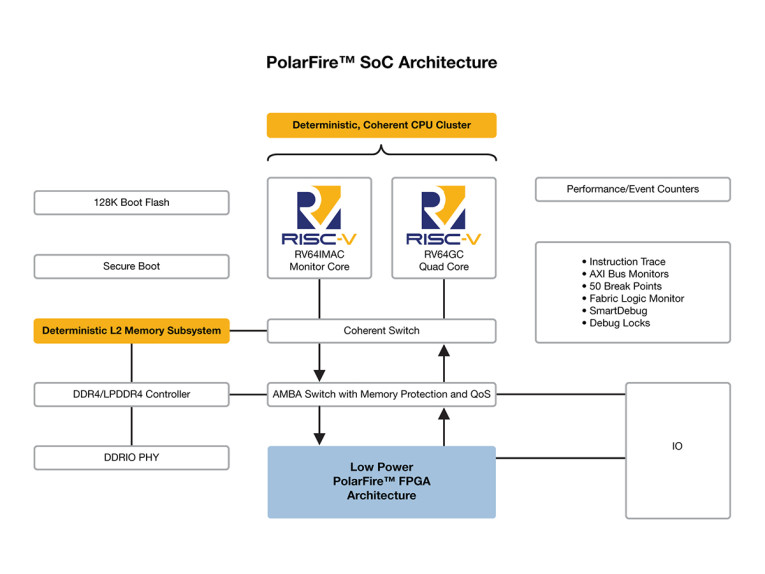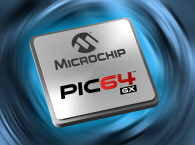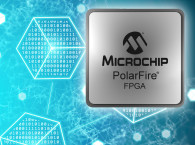
In a new era of computing driven by the convergence of 5G, machine learning and the internet of things (IoT), embedded developers need the richness of Linux-based operating systems. These must meet deterministic system requirements in ever lower power, thermally constrained design environments—all while addressing critical security and reliability requirements.
Traditional system-on-chip (SoC) field programmable gate arrays (FPGAs) blending reconfigurable hardware with Linux-capable processing on a single chip provide developers ideal devices for customization, yet consume too much power, lack proven levels of security and reliability, or use inflexible and expensive processing architectures.
Announced at the RISC-V Summit in Santa Clara, California, Microchip's new PolarFire SoC architecture brings real-time deterministic asymmetric multiprocessing (AMP) capability to Linux platforms in a multi-core coherent central processing unit (CPU) cluster. The PolarFire SoC architecture, developed in collaboration with SiFive, features a flexible 2 MB L2 memory subsystem that can be configured as a cache, scratchpad or a direct access memory. This allows designers to implement deterministic real-time embedded applications simultaneously with a rich operating system for a variety of thermal and space constrained applications in collaborative, networked IoT systems.
"The PolarFire SoC architecture is a compelling combination of low power, security and reliability in a configurable device that brings real-time to Linux," says Bruce Weyer, vice president of the Programmable Solutions business unit at Microchip. "Coupled with our robust Mi-V RISC-V ecosystem and Microchip's extensive portfolio of system solutions, the PolarFire SoC architecture gives customers an excellent platform to meet computing's next great challenges."
PolarFire SoC includes extensive debug capabilities including instruction trace, 50 breakpoints, passive run-time configurable Advanced eXtensible Interface (AXI) bus monitors and FPGA fabric monitors, and Microchip's built-in two-channel logic analyzer SmartDebug. The PolarFire SoC architecture includes reliability and security features such as single error correction and double error detection (SEC-DED) on all memories, physical memory protection, a differential power analysis (DPA) safe crypto core, defense-grade secure boot and 128Kb flash boot memory.
"As a fully customizable, programmable RISC-V platform, the PolarFire SoC architecture gives designers the freedom to create innovative Linux-based SoCs in novel and interesting ways tailored for their distinct, domain-specific requirements," adds SiFive CEO Naveed Sherwami. "By leveraging SiFive's market-leading U54-MC CPU core complex, PolarFire SoC will enable designers to overcome the universal challenge of building real-time systems with predictable behaviors."
Development Tools
PolarFire SoC designs can be evaluated using the antmicro Renode system modeling platform, which is now integrated with Microchip's SoftConsole integrated design environment (IDE) for embedded designs targeting PolarFire SoCs. A PolarFire SoC development kit is also available, consisting of the PolarFire FPGA-enabled HiFive Unleashed Expansion Board and SiFive's HiFive Unleashed Development Board with its RISC-V microprocessor subsystem.
As part of the announcement, Microchip is launching a new Mi-V Embedded Experts Program, a worldwide partner network to assist customers in hardware/software designs for PolarFire SoC. The addition of this program ensures support throughout the entire lifecycle of customer products, and helps to jump-start designs and shorten time to market. Members also get access to direct technical support and early access to development platforms and silicon.
www.microchip.com | www.microsemi.com/polarfiresoc






